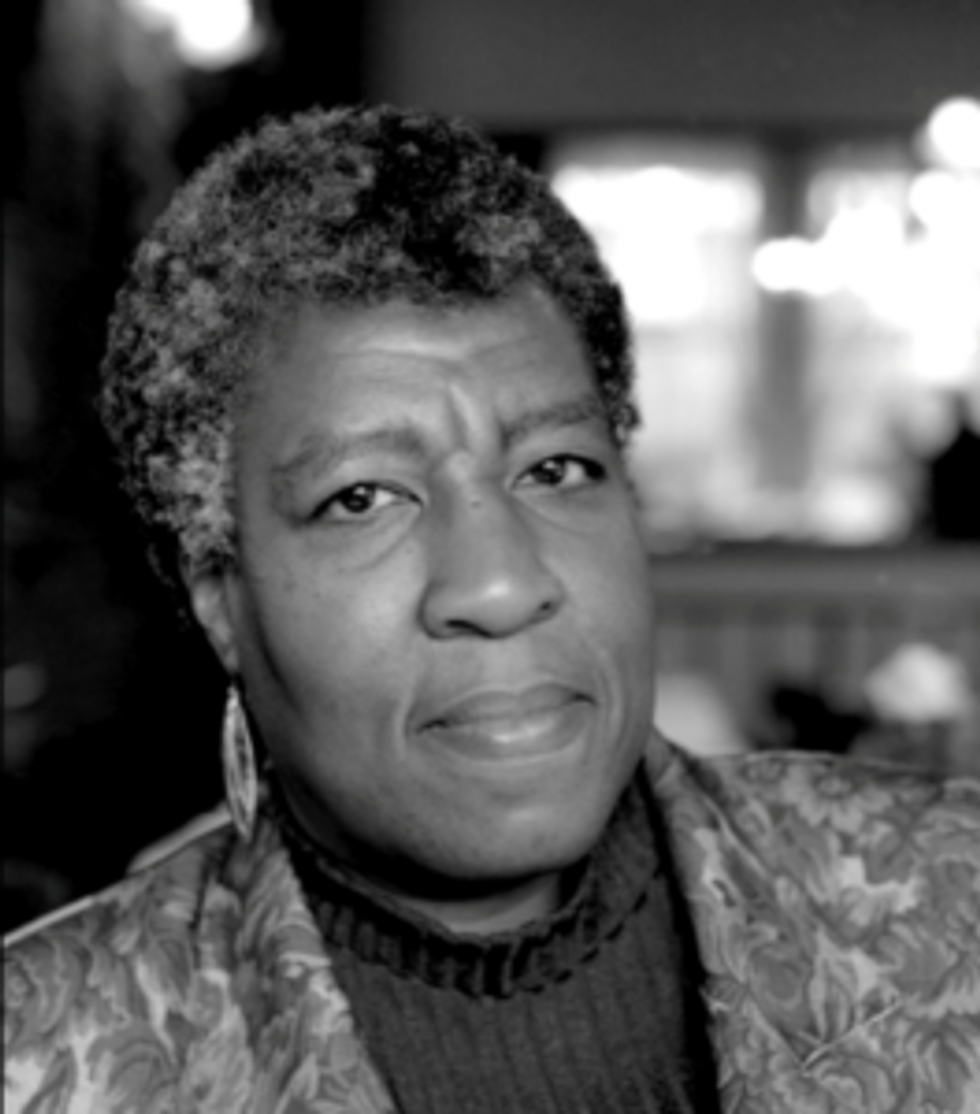NASA Names Mars Rover Landing Site After Pasadena Sci-Fi Pioneer Octavia Butler
GeekWire contributing editor Alan Boyle is an award-winning science writer and veteran space reporter. Formerly of NBCNews.com, he is the author of "The Case for Pluto: How a Little Planet Made a Big Difference." Follow him via CosmicLog.com, on Twitter @b0yle, and on Facebook and MeWe.

Fifteen years after her death, science-fiction author Octavia E. Butler has joined an exclusive pantheon of space luminaries memorialized on Mars.
Today NASA announced that the Red Planet locale where its Perseverance rover touched down last month is called Octavia E. Butler Landing, in honor of a Black author who emphasized diversity in tales of alternate realities and far-out futures.
"Butler's protagonists embody determination and inventiveness, making her a perfect fit for the Perseverance rover mission and its theme of overcoming challenges," Kathryn Stack Morgan, deputy project scientist for Perseverance, said in a news release. "Butler inspired and influenced the planetary science community and many beyond, including those typically under-represented in STEM fields."
Butler grew up poor in Pasadena and attended Pasadena City College, where she focused on writing. She published her first book in 1976 and broke into the mostly white, male dominated world of science fiction writing. In 1995, she was awarded a fellowship from the MacAurthur Foundation, She moved to the Seattle area in 1999, where she died unexpectedly in 2006 at the age of 58, after sustaining a head injury in a fall on a walkway outside her home in Lake Forest Park, Wash.
In his own tribute to Butler, Thomas Zurbuchen, NASA's associate administrator for space science, emphasized the connection to Southern California, the home of NASA's Jet Propulsion Laboratory and Perseverance mission operations.

Science-fiction author Octavia E. Butler grew up in Pasadena and spent the last years of her life in the Seattle area. (Writers House Literary Agency / Courtesy Ching-Ming Cheung)
"I can think of no better person to mark this historic landing site than Octavia E. Butler, who not only grew up next door to JPL in Pasadena, but she also inspired millions with her visions of a science-based future," Zurbuchen said. "Her guiding principle, 'When using science, do so accurately,' is what the science team at NASA is all about. Her work continues to inspire today's scientists and engineers across the globe – all in the name of a bolder, more equitable future for all."
The official names of geographical features on other planets must be approved by the International Astronomical Union, but NASA has a tradition of giving its own names to off-world landing sites – for example, Tranquility Base, the place on the moon where Apollo 11 touched down in 1969.
The 1997 landing site for NASA's Pathfinder mission to Mars is known as Carl Sagan Memorial Station, in honor of the late astronomer and author of "Contact."
In 2004, NASA designated the landing sites for the Opportunity and Spirit Mars rovers as Challenger Memorial Station and Columbia Memorial Station, respectively. Those names honor space shuttle crews who lost their lives in 1986 and 2003.
The place where NASA's Curiosity rover touched down in 2012 is called Bradbury Landing, as a tribute to Ray Bradbury, the author of "The Martian Chronicles" and many other works of science fiction.
Perseverance has already begun to venture out from Butler Landing: In addition to announcing the landing site's name, members of the mission team shared imagery from the 1-ton, six-wheeled rover's first drive since its Feb. 18 touchdown.
Perseverance's first drive on Mars
Thursday's traverse lasted about 33 minutes and put 21 feet (6.5 meters) on Perseverance's odometer. Color pictures sent back from Perseverance's hazard avoidance cameras show the tread marks left in Mars' red dirt as the rover took its first spin. Such imagery will be used to assess the dynamics of Perseverance's retro-rocket landing, which kicked up dust and exposed rock formations at Butler Landing.
"When it comes to wheeled vehicles on other planets, there are few first-time events that measure up in significance to that of the first drive," said Anais Zarifian, rover mobility testbed engineer at JPL. "This was our first chance to 'kick the tires' and take Perseverance out for a spin. The rover's six-wheel drive responded superbly. We are now confident our drive system is good to go, capable of taking us wherever the science leads us over the next two years."
The rover's software has already been updated to replace the program for landing with the program for surface operations. Mission controllers have also conducted procedures for deployment and checkout of Perseverance's RIMFAX, MOXIE and MEDA instruments, as well as its heavy-duty robotic arm.
"Tuesday's first test of the robotic arm was a big moment for us. That's the main tool the science team will use to do close-up examination of the geologic features of Jezero Crater, and then we'll drill and sample the ones they find the most interesting," said Robert Hogg, Perseverance's deputy mission manager. "When we got confirmation of the robotic arm flexing its muscles, including images of it working beautifully after its long trip to Mars – well, it made my day."

More than 7,000 raw images have been sent back to Earth and are available online in a gallery supported by Amazon Web Services. That stockpile is sure to grow as Perseverance ramps up full science observations.
The mission plan calls for the rover to make regular commutes of 650 feet (200 meters) or more to sites of scientific interest. "We're going to do some longer drives," Zarifian said. "This is really just the beginning."
The primary goal of the $2.7 billion Perseverance mission is to analyze the composition of Martian soil for traces of ancient life, and store up promising samples for return to Earth by later missions over the next decade.
This story first appeared on GeekWire.
- Mining Asteroids, Space Contracts and How NASA Hopes to Create ... ›
- NASA Rover to Land on Mars With 3D Printed Parts - dot.LA ›
- NASA Releases Stunning Video, Audio from Mars - dot.LA ›
- Moxie Mars Rover Will Produce Oxygen For Future Astronauts - dot.LA ›
- Mars Sucks: This LA Ad Agency Trolled Elon Musk on Earth Day - dot.LA ›
- Could NASA Satellite Images Influence Climate Change Policy? - dot.LA ›
GeekWire contributing editor Alan Boyle is an award-winning science writer and veteran space reporter. Formerly of NBCNews.com, he is the author of "The Case for Pluto: How a Little Planet Made a Big Difference." Follow him via CosmicLog.com, on Twitter @b0yle, and on Facebook and MeWe.




